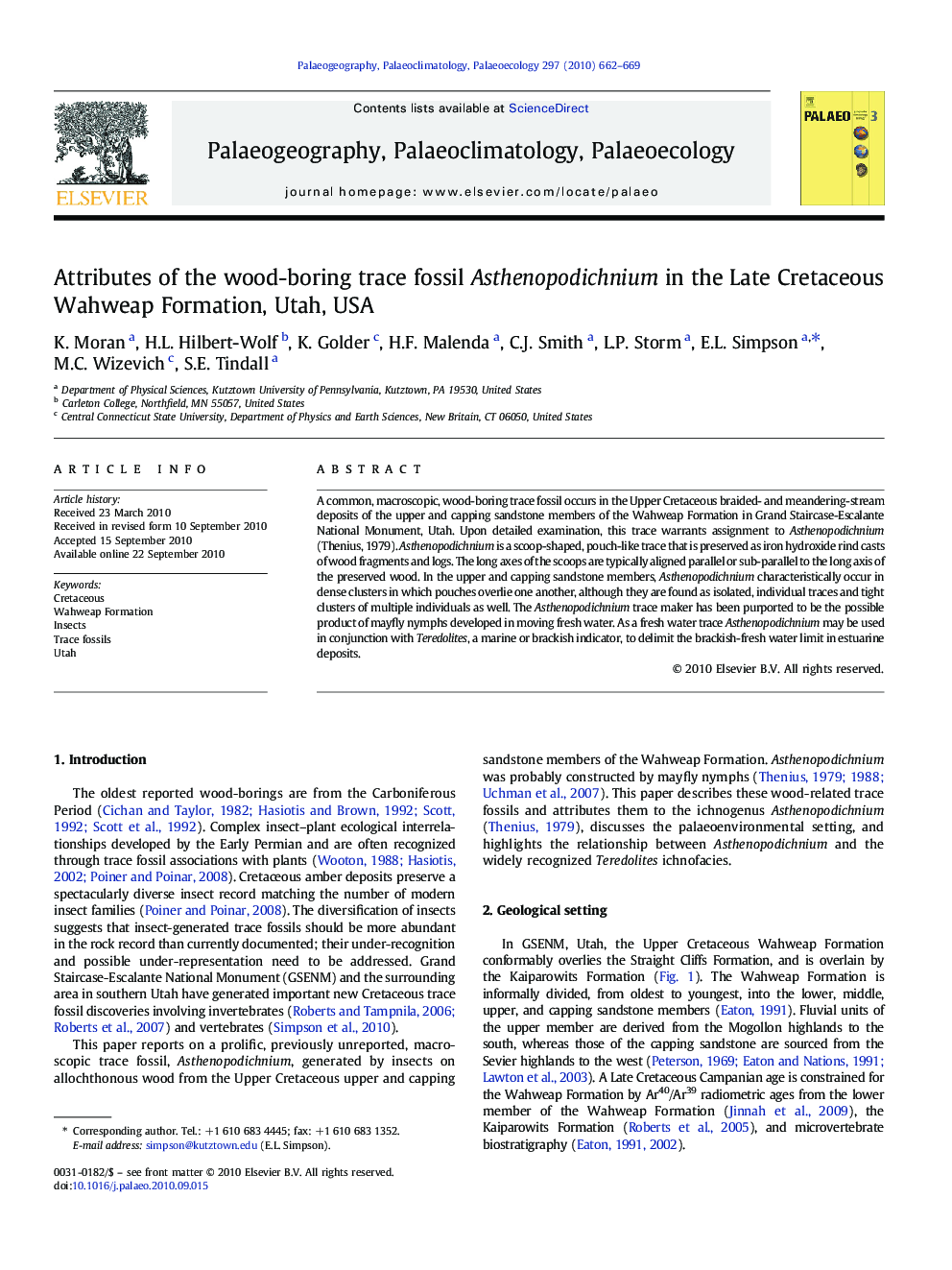| Article ID | Journal | Published Year | Pages | File Type |
|---|---|---|---|---|
| 4467465 | Palaeogeography, Palaeoclimatology, Palaeoecology | 2010 | 8 Pages |
A common, macroscopic, wood-boring trace fossil occurs in the Upper Cretaceous braided- and meandering-stream deposits of the upper and capping sandstone members of the Wahweap Formation in Grand Staircase-Escalante National Monument, Utah. Upon detailed examination, this trace warrants assignment to Asthenopodichnium (Thenius, 1979). Asthenopodichnium is a scoop-shaped, pouch-like trace that is preserved as iron hydroxide rind casts of wood fragments and logs. The long axes of the scoops are typically aligned parallel or sub-parallel to the long axis of the preserved wood. In the upper and capping sandstone members, Asthenopodichnium characteristically occur in dense clusters in which pouches overlie one another, although they are found as isolated, individual traces and tight clusters of multiple individuals as well. The Asthenopodichnium trace maker has been purported to be the possible product of mayfly nymphs developed in moving fresh water. As a fresh water trace Asthenopodichnium may be used in conjunction with Teredolites, a marine or brackish indicator, to delimit the brackish-fresh water limit in estuarine deposits.
